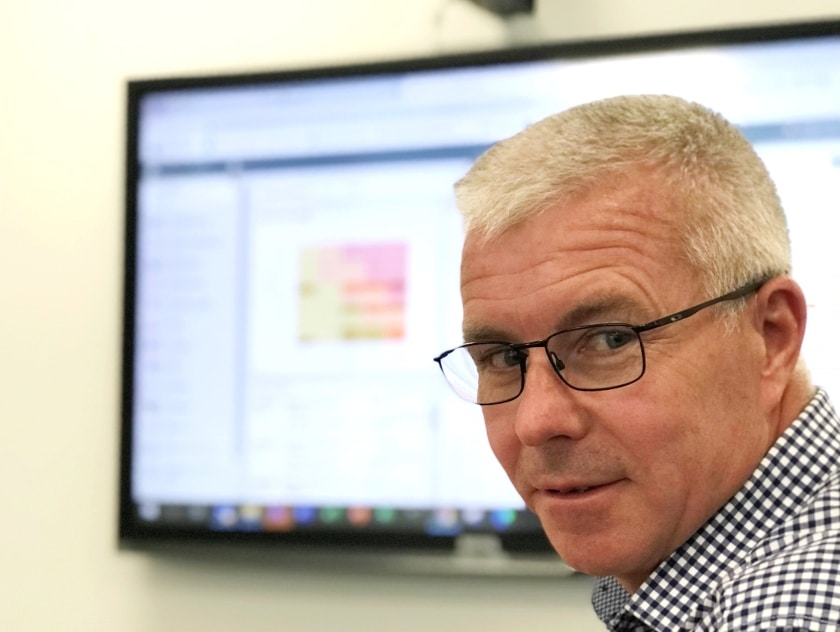
Redline Assured Security MD, Paul Mason says the transition to CT technology is “the beginning of the future for airport security”.
The UK government has given airports a deadline of June 2024 to transition from 2D to 3D baggage security scanners.
Powered by Computer Tomography (CT) technology, 3D scanners provide granular imagery of the contents of carry-on bags, meaning that passengers will not be required to remove electronics and liquids from their bags.
The transition from 2D to 3D is already being implemented at Teesside International Airport, London City Airport with many other airports following quickly throughout the UK.
At Redline Assured Security, we are providing our Threat Image Recognition Training (TIRT) to security screeners at many major airports including Teesside International Airport and Manchester Airport Group on both 2D and 3D machines.
2D X-ray scanners are limited to providing a two-dimensional (2D) image (cross section and plan section) image of the contents and as a result ‘busy’ bag contents lead to time-consuming hand-searches in already crowded airports.
The far more advanced CT scanning technology generates a rotating 360° image that allows baggage screeners to review baggage content in three dimensions (3D) allowing for a crystal-clear view of dimension, size, and position of items in a bag as well as composition of the substances/material.
The resultant vastly enhanced threat detection capability leaves no place to hide a threat item in a bag. However, whilst the CT machines themselves will certainly aid screeners in quickly identifying dangerous items, this will only happen if the screeners are trained to effectively operate this technology.
Our Threat Image Recognition Training essentially teaches screeners how to interact with the screening technology and to interrogate an image to make informed and educated decisions regarding the bag contents.
Screeners learn to use varying levels of X-Ray penetration to identify different materials, for example organics or metallics, and they learn how adjustments to enhancements can reveal different parts of an object at differing levels of granularity and density.
There is a cognitive element to the training, whereby screeners’ brains are trained to recognise how everyday items and threats are portrayed on the screen, building a library of potential items that could pass through a screening machine at any time.
At Redline, we strive to help screeners ‘continually improve’ their level of threat detection proficiency, not just to be competent at their job. Our Threat Image Recognition Training records every screening interaction and decision made so that we have a clear picture of their ability to detect with accuracy so that we can assess and improve screeners based on their error rate profile, for example, what do they miss and why?
Our training is conducted in line with the EU regulatory 6×6 model, meaning that each screener undergoes 6 hours of training every 6 months. We ensure that they are not just performing but always improving, providing a level of quality assurance for airports that their staff are able to effectively identify and intercept threat during the security screening process.
Our Threat Image Recognition Training is currently being used in many airports worldwide with over 15000 active screeners using the system.
AI is becoming more embedded in security processes and is being used to identify and isolate threats in baggage, providing screeners with a clear indication that a decision should be made to act. Consequently, the screener’s role will evolve to that of decision maker, which will require confidence and accountability.
Looking ahead, the ability to easily and accurately differentiate between every day and prohibited items means that bag checks will be the exception rather than the norm, and the bags that are flagged are far more likely to contain a real threat as opposed to a false alarm.
The introduction of CT scanners is the beginning of the future for airport security. As the technology becomes more widespread and streamlined in its application, security will become less intrusive and efficient, meaning a more seamless and pleasant customer journey through airport security.
AI is also being introduced to body scanning technology, which can pinpoint threats on a passenger without the need for a pat-down, and instead of long queues, bagged liquids and multiple trays, the future airport may feature security that feels as simple as walking along a travelator, with bags containing threat items identified accurately and decisions escalated appropriately.